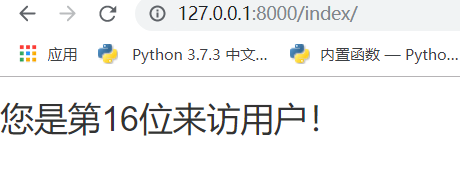Redis:
- nosql数据库,非关系型数据库
- 支持5大数据类型 (字符串String,列表list、字典hash,集合set,zset)
- 与之相似的有memcache,但memcache只支持string类型
- 单进程单线程,好处在于不用考虑并发
Redis常用操作
from redis import Redis# from redis import ConnectionPool
conn = Redis() # 实例化对象,创建连接对象 # conn.set('name','dxx') # 单个插入 # for i in range(1,100): # conn.set("the %s key"%i, 'the %s value'%i,ex=i) # 循环插入 # ret = conn.get("the 80 key") # 取不到是为None 无法指定默认值 # # print(ret) # conn.set('name','希希') # 单个插入 中文会自动以utf8编码转码为bytes类型 # # for i in range(1,100): # conn.set("%skey"%i,'%svalue'%i) from app01.Redis_POOL import POOL # 连接池做成单例 conn = Redis(connection_pool=POOL) print(conn.get("name").decode("utf8")) # 字符串操作 conn.set('age',19,ex=10,xx=True) conn.setex('hobby',10,'basketball') # (key,time, value) # 批量添加,传字典 conn.mset({'k1':'v1','k2':'v2'}) # 批量取值 print([ res.decode("utf8") for res in conn.mget(['k1', 'k2'])]) # 追加 conn.setrange('k1',1,'pp') # 从索引1的位置往后覆盖 conn.set('k3','10') # conn.setrange('k3',2,'10') # 从索引2的位置往后覆盖 # # print(conn.get('k3')) # 重点 (网站访问量) conn.incr('ask_total',amount=1) # 递增 可指定频率为负数,表示递减 conn.decr('ask_total') # 与上相反 conn.append('ask_total',22) # 向原有值后拼接 #hash操作 conn.hset('hax1','k1','v1') # 存 print(conn.hget("hax1", 'k1')) # 取 #批量存取 conn.hmset('hax1',{'k2':'v2','k3':'v3'}) print(conn.hmget('hax1', ['k1', 'k2',])) print(conn.hmget('hax1', 'k1', 'k2')) # 内部做判断是否列表 print(conn.hgetall('hax1')) # {b'k1': b'v1', b'k2': b'v2', b'k3': b'v3'} print(conn.hgetall('hax1')[b"k1"]) # b'v1' print(conn.hlen('hax1')) # 3 列表/数组长度 conn.hdel('hax1','k1') # 哈希删除 print(conn.hget('hax1','k1')) # 再查询 conn.hset('hax1','k2',22) conn.hincrby('hax1','k2',amount=-10) # 哈希递增 或者递减 print(conn.hget('hax1','k2')) # 重点 hscan hscan_iter for i in range(1,1000): conn.hset('hax2','%skey'%i,'%svalue'%i) # match 过滤条件 模糊匹配,只有?和*两种模式,?表示匹配一个,*表示匹配多个count 取出数据个数 print(conn.hscan('hax2',10,match='350value',count=20)) # (26, {}) print(conn.hscan('hax2',10,match='350',count=20)) # (26, {}) print(conn.hscan('hax2',10,match='350key',count=20)) # (26, {b'350key': b'350value'}) # conn.hscan_iter('hax2',count=10) genrator = conn.hscan_iter('hax2',count=10) # 产生迭代器,迭代器能产生的数据不因count值而变化, # count的作用是限制一次向redis要多少数据,用完了再要 print(genrator) # 打印的生成器内存地址 print('生成器长度:',len(list(genrator))) # 会取完hax2中所有的数据 for i in genrator: print(i) # 由于上方len(list(genrator))已经将生成器迭代完,故迭代器已经无元素可迭代,无值打印 # redis列表操作 conn.lpush('h1','11') # 列表左追加 conn.rpush('h1','10','9') # 列表右追加 print(conn.linsert('h1','AFTER','11',99)) # 在元素11后面插入99 print(conn.linsert('h1','AFTER','11','99')) # 在元素11前面插入99 #如果列表中有多个'11',那么插在第一个'11'的前面或者后面 print(conn.llen('h1')) conn.lset('h1',1,'1111') # 将索引为1的元素用'1111'替换 conn.lrem('h1',-5,11) #lrem(name,count,value) # count的正负表示从头开始还是从尾巴开始删除和value相同的值,0表示删除所有相同的 #count的数字表示删除几个 print(conn.lindex('h1', 3)) # 取列表索引为3的值 print(conn.lrange('h1', 1, 5)) #切片取值 取列表索引1-5的元素,闭区间 print(conn.lrange('h1',0,conn.llen('h1'))) # 取列表所有元素 #blpop 重点 print(conn.lpop('h1')) print(conn.lpop('h1')) # 从左删除一个元素 print(conn.rpop('h1')) # 从右删除一个元素 while True: print(conn.blpop('h1')) # 取完了会在这里阻塞,等待有下一个值被添加,你会不会想到队列呢? # 是的,它可以实现队列的效果,可以实现分布式 # 可以同时开多个客户端去blpop,也可以同时开多个客户端去新增
# 自定义列表生成器 - 如果列表非常庞大,一次性取出可能会撑爆内存,因此需要自定义列表生成器进行迭代取值 def scan_list(name,count=10): index = 0 while True: data_list = conn.lrange(name,index,count) if not data_list: return index+= count count+=index for item in data_list: yield item sa_list = scan_list('h1',5) for i in sa_list: print(i) conn.delete('name') # 删除 print(conn.exists('hax2')) # 返回0或1 print(conn.keys('k?')) # 模糊匹配,只有?和*两种模式,?表示匹配一个,*表示匹配多个 print(conn.keys('k*')) conn.rename('k1','kk') # 重命名 # 利用管道实现事务操作,redis没有自身事务操作,需借助管道实现 pipe = conn.pipeline(transaction=True) pipe.multi() pipe.set('name','egon') pipe.lpush('h1','aa') pipe.execute()
应用场景:
一、利用原生redis实现网站流量统计
由于是全局统计,Django中我们需要自定义中间件来实现
from redis import Redis from django.middleware.common import MiddlewareMixin Conn = Redis() class CountVisitorMiddle(MiddlewareMixin): def process_request(self,request): num = Conn.hget('count_visitor','number') if num: Conn.hset('count_visitor','number',int(num.decode("utf8"))+1) else: Conn.hset('count_visitor', 'number', 1)
配置文件中配置:
MIDDLEWARE = [ .......其他中间件......... 'app01.CountCustomerMiddleWare.CountVisitorMiddle', ]
视图函数中使用:
from django.shortcuts import render # Create your views here. from app01.redis_hander import Conn def index(request): visitor_number = Conn.hget('count_visitor','number').decode('utf8') return render(request,"index.html",locals())
效果:

当然,django有更好的封装来让我们使用基于redis的缓存实现
二、利用Django基于redis的缓存实现网站流量统计
配置文件中配置缓存信息:
CACHES = { "default": { "BACKEND": "django_redis.cache.RedisCache", # cache存储引擎为redis数据库 "LOCATION": "redis://127.0.0.1:6379", # redis服务器地址 "OPTIONS": { "CLIENT_CLASS": "django_redis.client.DefaultClient", "CONNECTION_POOL_KWARGS": {"max_connections": 100} # redis数据库连接池大小限制 # "PASSWORD": "123", } } }